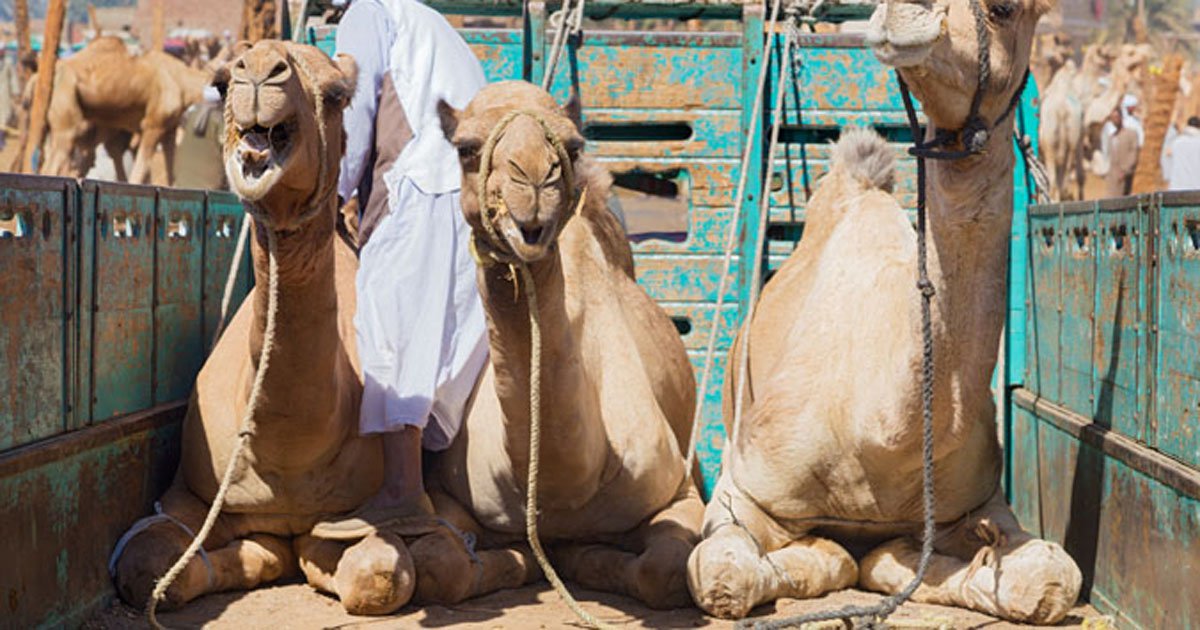Live-camel handlers at higher risk for MERS-CoV infection
People who handle live camels are at an increased risk for infection with Middle East respiratory syndrome coronavirus, or MERS-CoV, according to a study findings from the United Arab Emirates.
“MERS-CoV is a zoonotic virus, and dromedaries (camels) are recognized as a major virus reservoir for spillover to humans. Multiple studies have isolated MERS-CoV or MERSCoV RNA from camels across the Arabian Peninsula and Africa,” CDC epidemiologist Marie Killerby, VetMB, MPH, and colleagues wrote in Emerging Infectious Diseases.
“Although multiple lines of evidence suggest camel exposure is associated with human MERS-CoV infection, the exact mechanisms of transmission are not fully understood. Information on specific risk factors relating to camel interactions are needed to further understand how the virus might be transmitted from camels to humans and to guide interventions to prevent zoonotic transmission, including changes to camel management practices.”
Killerby and colleagues from the CDC, Abu Dhabi Department of Health, Sheikh Khalifa Medical City and Abu Dhabi Food Control Authority aimed to identify risk factors for MERS-CoV seropositivity and focused on an open-air market and two slaughterhouses in Abu Dhabi, all of which housed camels, goats, sheep and cattle. The researchers collected serum samples from workers three times between May 2014 and March 2017, and surveyed workers about their demographics; occupational history; contact with various animal species; medical history, consumption of raw camel milk, meat or urine; specific tasks performed with camels; and types of personal protective equipment (PPE).

In total, they sampled 486 workers: 100 during the first round of testing, 151 in round two and 235 in round three. According to the study, MERS-CoV seroprevalence was 6%, 19% and 17%, respectively, in the three rounds of testing, and rates of seropositivity were higher among market workers than among slaughterhouse workers. Based on the survey, the researchers learned that slaughterhouse workers had more daily contact with the camels or their waste (44% vs. 52%); however, slaughterhouse workers practiced better care than market workers. According to the study, among slaughterhouse workers, 99% reported wearing a dust mask compared with 21% of market workers, 37% of slaughterhouse workers reported taking their work clothes home compared with 97% of market workers and 81% of slaughterhouse workers reported washing their hands before and after each animal-related task, compared with 21% of market workers.
Modeling showed that people who handled live camels or their waste (adjusted OR = 4.2; 95% CI, 1.7-11.8), worked as a camel salesman (aOR = 4; 95% CI 1.6–10.1) or self-reported diabetes (aOR = 6.2; 95% CI 1.2–30.3) faced increased odds of seropositivity.
“Our study found significantly increased odds of MERS-CoV seropositivity in persons with exposure to camels, in particular among those who handle live camels,” the authors concluded. “Odds of seropositivity were also significantly higher for camel salesmen, suggesting that preventive measures such as PPE use could focus on specific occupational groups, in addition to individual work practices. Determining groups at highest risk for zoonotic MERS-CoV infection could also inform future vaccine trials in geographic regions where MERS-CoV is known to circulate.” – by Caitlyn Stulpin
Disclosure: The author reports no relevant financial disclosures.
